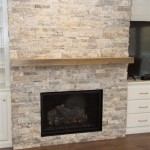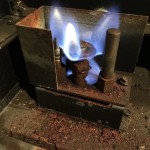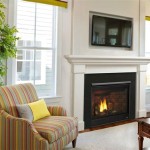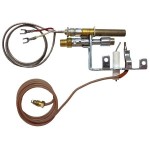Adding A Wood Burning Fireplace: A Comprehensive Guide
The allure of a wood-burning fireplace is undeniable. It offers a unique blend of aesthetic appeal, warmth, and a connection to a primal past. Beyond mere heating, a fireplace can transform a house into a home, fostering a cozy atmosphere and serving as a focal point for gatherings. However, the decision to add a wood-burning fireplace is one that requires careful planning, diligent research, and adherence to safety regulations. This article will delve into the essential aspects of installing a wood-burning fireplace, covering various considerations from initial planning to code compliance.
The process begins long before the first brick is laid. Thoroughly evaluating the existing structure, understanding local building codes, and carefully selecting the fireplace type are all crucial steps. Neglecting these preliminary considerations can lead to costly errors, safety hazards, and potential legal issues. Furthermore, understanding the ongoing maintenance responsibilities associated with wood-burning fireplaces is essential for long-term satisfaction and safety.
Assessing Your Needs and Options
Before embarking on the installation process, a comprehensive assessment of your needs and available options is paramount. This includes evaluating the size of the space you intend to heat, the aesthetic preferences you desire, and the budget you are willing to allocate. Additionally, it is vital to determine the structural feasibility of adding a fireplace to your existing home.
The size of the space will dictate the BTU (British Thermal Units) output required from the fireplace. A larger room necessitates a higher BTU rating to achieve effective heating. Conversely, an oversized fireplace in a smaller room can lead to uncomfortable overheating. Consulting with a qualified HVAC professional can provide valuable guidance in determining the appropriate BTU output for your specific needs.
Aesthetic preferences will influence the style of fireplace you choose. Options range from traditional masonry fireplaces to more modern, prefabricated units. Masonry fireplaces offer a timeless aesthetic and can be customized to match the architectural style of your home. However, they are typically more expensive to install and require a significant amount of space. Prefabricated fireplaces offer a more cost-effective and space-efficient alternative, with a variety of styles available to suit different tastes.
The budget is a critical factor in determining the scope of the project. In addition to the cost of the fireplace unit itself, you must also factor in the cost of installation, venting, and any necessary structural modifications. Obtaining multiple quotes from qualified contractors is essential to ensure you are receiving a fair price. It is also prudent to allocate a contingency fund to cover any unforeseen expenses that may arise during the installation process.
Structural feasibility is often overlooked but is a critical aspect of the planning process. Can the existing structure support the weight of a masonry fireplace? Is there adequate space for a chimney? These are questions that must be answered before proceeding with the installation. A structural engineer can assess the existing structure and provide recommendations for any necessary reinforcements or modifications.
Understanding Building Codes and Regulations
Complying with local building codes and regulations is not merely a suggestion; it is a legal requirement. These codes are designed to ensure the safety of your home and its occupants. They cover various aspects of fireplace installation, including venting requirements, clearances to combustible materials, and fire safety measures. Failure to comply with these codes can result in fines, legal action, and, most importantly, potential safety hazards.
Building codes vary depending on your location, so it is essential to contact your local building department to obtain the specific requirements for your area. The International Residential Code (IRC) is a widely adopted model code that provides guidelines for fireplace installation. However, local jurisdictions may have adopted amendments to the IRC or have their own unique codes. Understanding these local variations is crucial for ensuring compliance.
Venting requirements are particularly important. Improper venting can lead to the buildup of carbon monoxide, a deadly odorless gas. Building codes specify the required height and diameter of the chimney, as well as the type of materials that can be used for venting. It is imperative to use a qualified installer who is familiar with these requirements and can ensure proper venting.
Clearances to combustible materials are another critical safety consideration. Fireplaces generate significant heat, and if combustible materials are located too close, they can ignite. Building codes specify minimum clearances between the fireplace and combustible materials such as wood framing, drywall, and furniture. Adhering to these clearances is essential to prevent fires.
Fire safety measures, such as the installation of smoke detectors and carbon monoxide detectors, are also typically required by building codes. These devices provide early warning of potential hazards, allowing occupants to evacuate safely. Regular testing and maintenance of these devices are crucial for ensuring their effectiveness.
Installation Process and Safety Considerations
The installation process for a wood-burning fireplace is complex and requires specialized skills. It is strongly recommended to hire a qualified and licensed contractor with experience in fireplace installation. Attempting to install a fireplace yourself without the necessary expertise can be dangerous and can result in costly errors.
The installation process typically involves several stages. First, the site is prepared by removing any existing structures and ensuring the foundation is adequate to support the weight of the fireplace. Next, the fireplace unit is installed, and the venting system is connected. Finally, the surrounding area is finished with materials such as brick, stone, or tile.
Safety considerations are paramount throughout the installation process. Contractors should wear appropriate personal protective equipment (PPE), such as gloves, safety glasses, and respirators. It is also essential to follow all manufacturer's instructions and building codes. Before using the fireplace for the first time, it is crucial to have it inspected by a qualified professional to ensure it has been installed correctly and is operating safely.
Proper maintenance is essential for ensuring the long-term safety and efficiency of a wood-burning fireplace. Regular cleaning of the chimney is necessary to remove creosote buildup. Creosote is a flammable substance that can accumulate in the chimney over time, increasing the risk of a chimney fire. A professional chimney sweep can safely and effectively remove creosote buildup.
Burning only seasoned firewood is another important safety consideration. Seasoned firewood has a lower moisture content than green firewood, which means it burns more cleanly and produces less creosote. Avoid burning treated wood, as it can release toxic chemicals into the air. Always keep a fire extinguisher nearby and ensure that everyone in the household knows how to use it.
In conclusion, adding a wood-burning fireplace can be a rewarding investment, enhancing the aesthetic appeal and comfort of your home. However, it is a complex undertaking that requires careful planning, adherence to building codes, and a commitment to safety. By understanding the essential aspects of fireplace installation and maintenance, you can enjoy the warmth and ambiance of a wood-burning fireplace safely and efficiently for years to come.

Fireplace Installation Full Service Chimney Serving Kansas City Area

New Wood Burning Prefab Fireplaces Complete Fireplace Installs

How To Install A Wood Stove 10 Steps With S Wikihow

Wood Stove Installation Diagram Burning Corner

How To Install A 3000 Wood Fireplace

Wood Burning Fireplaces Fireplace Installation Madison Wi Verona

Log Burner Installation Guide

Wood Burning Stoves S Installation In Burlington Wi

Fireplace Installations Near Dc Chimney Experts

Your Guide To Wood Stove Installation Full Service Chimney
Related Posts








